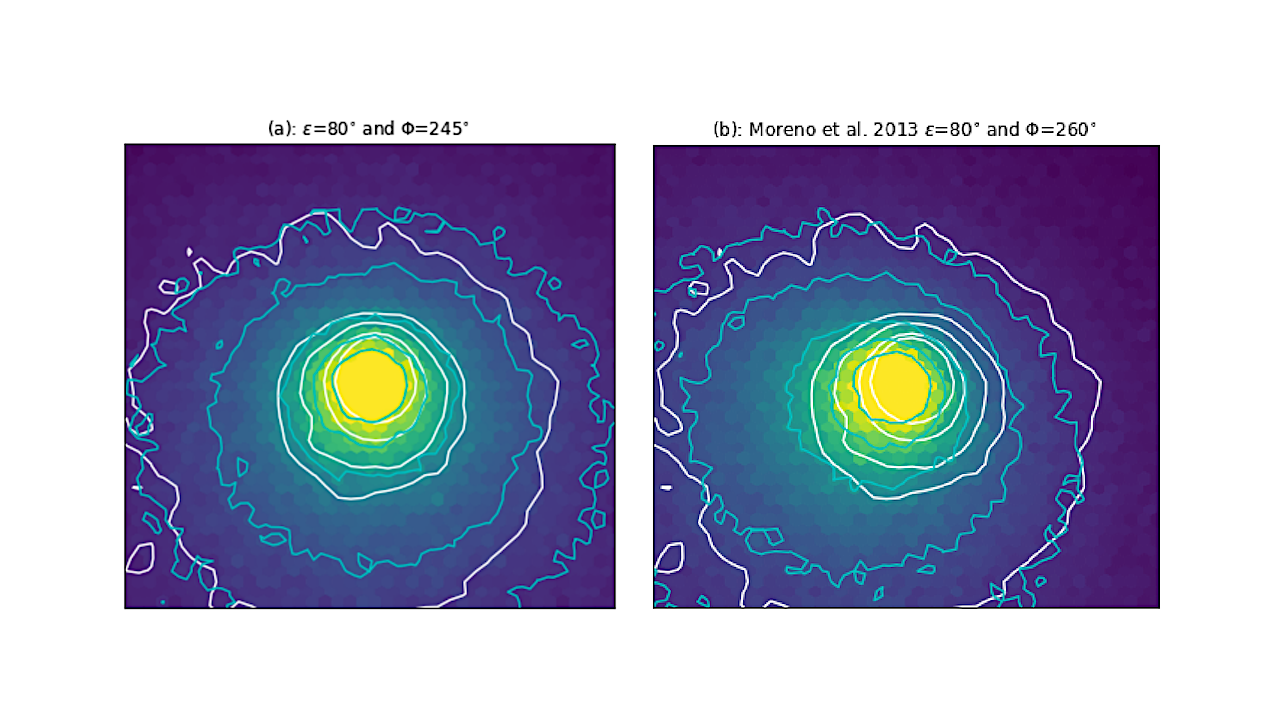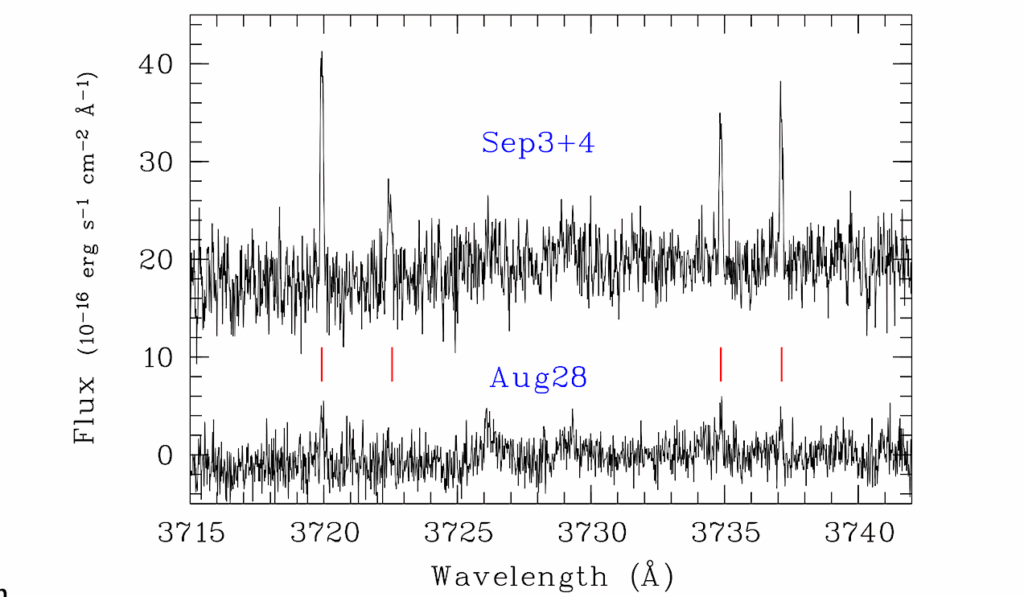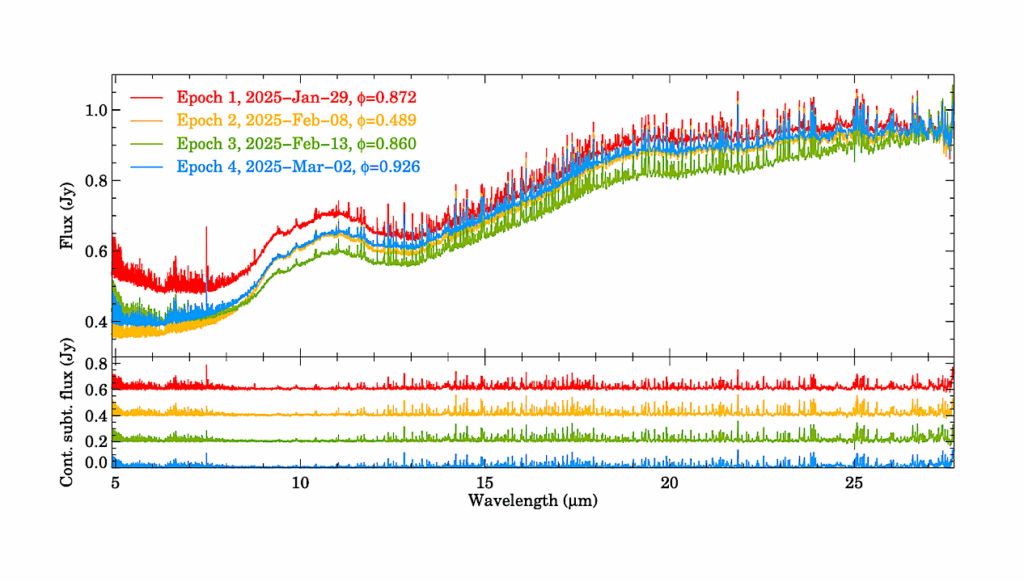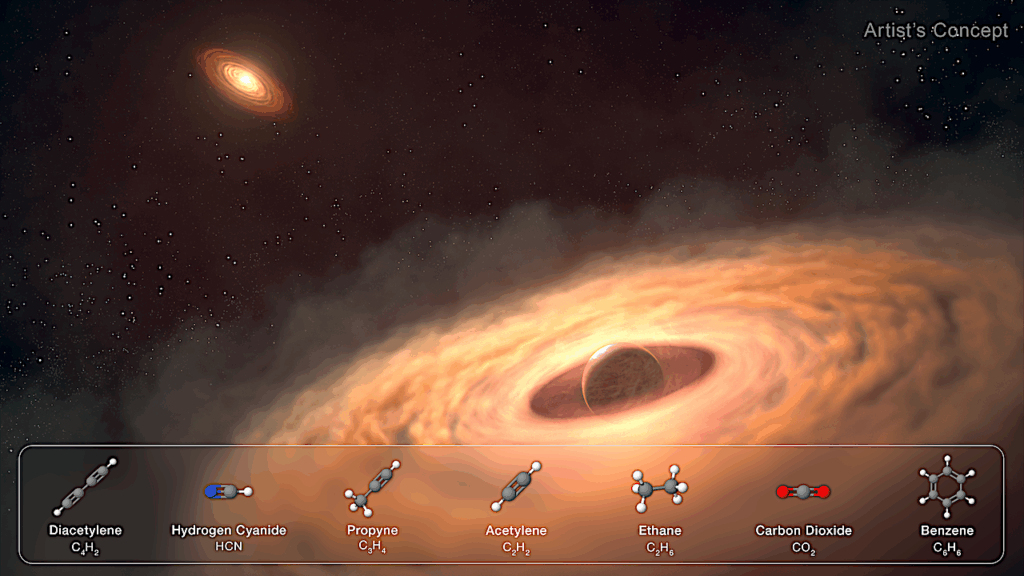The Volatile Composition and Activity Evolution of Main-Belt Comet 358P/PANSTARRS

We report the detection of water vapor associated with main-belt comet 358P/PANSTARRS on UT 2024 January 8-9 using the NIRSPEC instrument aboard JWST.
We derive a water production rate of QH2O=(5.0+/-0.2)x1025 molecules/s-1, marking only the second direct detection of sublimation products of any kind from a main-belt comet, after 238P/Read. Similar to 238P, we find a remarkable absence of hypervolatile species, finding QCO2<7.6×1022 molecules/s-1 corresponding to QCO2/QH2O<0.2%.
Upper limits on CH3OH and CO emission are also estimated. Photometry from ground-based observations show that the dust coma brightened and faded slowly over ~250 days in 2023-2024, consistent with photometric behavior observed in 2012-2013, but also indicate a ~2.5x decline in the dust production rate between these two periods.
Dynamical dust modeling shows that the coma’s morphology as imaged by JWST’s NIRCAM instrument on 2023 November 22 can be reproduced by asymmetric dust emission from a nucleus with a mid-range obliquity (~80 deg) with a steady-state mass loss rate of ~0.8 kg/s-1. Finally, we find similar Af ρ-to-gas ratios of log10(Afp/QH2O)=-24.8+/-0.2 for 358P and log10(Afp/QH2O)=-24.4+/-0.2 for 238P, suggesting that Afp could serve as an effective proxy for estimating water production rates in other active main-belt comets.
The confirmation of water vapor outgassing in both main-belt comets observed by JWST to date reinforces the use of recurrent activity near perihelion as an indicator of sublimation-driven activity in active asteroids.
Henry H. Hsieh, John W. Noonan, Michael S. P. Kelley, Dennis Bodewits, Jana Pittichova, Audrey Thirouin, Marco Micheli, Matthew M. Knight, Michele T. Bannister, Colin O. Chandler, Carrie E. Holt, Matthew J. Hopkins, Yaeji Kim, Nicholas A. Moskovitz, William J. Oldroyd, Jack Patterson, Scott S. Sheppard, Nicole Tan, Chadwick A. Trujillo, Quanzhi Ye
Comments: 32 pages, 13 figures. Accepted for publication in The Planetary Science Journal
Subjects: Earth and Planetary Astrophysics (astro-ph.EP)
Cite as: arXiv:2411.07435 [astro-ph.EP] (or arXiv:2411.07435v1 [astro-ph.EP] for this version)
https://doi.org/10.48550/arXiv.2411.07435
Focus to learn more
Submission history
From: Henry Hsieh
[v1] Mon, 11 Nov 2024 23:30:39 UTC (8,329 KB)
https://arxiv.org/abs/2411.07435
Astrobiology, Astrochemistry,








